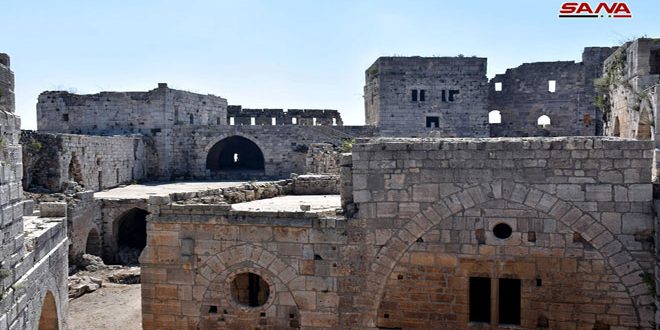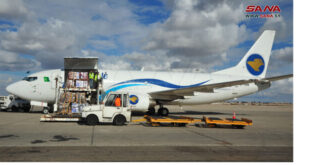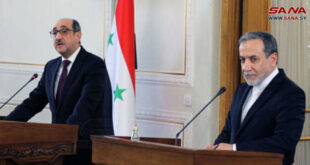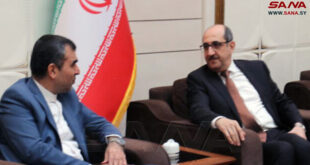Homs, SANA- Homs central province enjoys a wide cultural diversity as it embraces about five thousand archeological sites which have been the fruit of tens of successive civilizations.
The archeological sites in Homs province, according to Chairman of Tourism Directorate Ahmad Akkash, belong to 33 successive civilizations and they embrace markets, khans, traditional handicrafts shops and ancient houses that represent unique tourist destinations.
Akkash said that these tourist destinations are able to achieve economic recovery, in addition to their role on the level of knowledge.
He called for rehabilitating the sites which are in danger of major collapse and for paying more attention to providing the tourist services in them.
The wide area of Homs province made it rich in the cities and the huge archeological monuments such as Palmyra, Krak des Chevaliers, al-Hayr al-Sharqi Palace, Umm al-Zennar Church, Khalid Ibn al-Walid Mosque, Tal al-Mishirfa, Saint George Monastery or Deir Mar Georges and the Church of Saint Elian, in addition to many ancient markets and gates which makes Homs the first tourist destination in Syria, particularly after restoring security and stability to most of its areas.
Krak des Chevaliers is a prominent archeological site in Homs, particularly as it was classified as a UNESCO World Heritage Site since 2006 as it enjoys a unique architectural style, in addition to its location as it is surrounded by a charming natural scene.
Palmyra City is also one of the archeological sites which have been recognized by UNESCO as World Heritage Sites, but 16 years before Krak des Chevaliers, and upgrading the reality of the city after the destruction it went through at the hands of terrorists has become necessary to activate the tourist movement in the province along with developing its infrastructure and facilities such as the restaurants and hotels.
After the heavy rainfalls witnessed in the year 2019, Afqa archeological Spring returned to life and started to flow again after its dryness, which lasted about 25 years.
The spring was historically thought to be the cause of prosperity and the continuity of life in Palmyra City more than 6,000 years ago.
After the spring flew again, the therapeutic tourism returned to the city as mineral water is a means for healing, especially of dermatological, intestinal and articular diseases, according to Archeologist and Chairman of the Tourism Department Jamil Omer al-Qayyem.
Al-Qayyem called for rehabilitating the spring to invest it in the fields of archeology, environment and tourism and to put it within the tourism investment programs held by the Ministry of Tourism annually.
In addition to the archeological sites which Homs has been famous for worldwide, it also embraces other important sites such as Kharbaqa Dam which is a Roman era Palmyrene gravity dam in the Syrian desert about 70 km southwest from Palmyra on the road to Damascus.
The dam, built of rubble, concrete, and dressed with ashlar stones, dates to the first or second century AD. The dam later was used as a water supply for the Umayyad palace of Qasr al-Hayr al-Gharbi.
Due to the systematic destruction which Homs province went through at the hands of Takfiri organizations during the years of the terrorist war which dragged on for about eight years, it has become necessary to launch awareness campaigns to enhance the care for the archeological sites and to rehabilitate them.
Ruaa al-Jazaeri
 Syrian Arab News Agency S A N A
Syrian Arab News Agency S A N A




